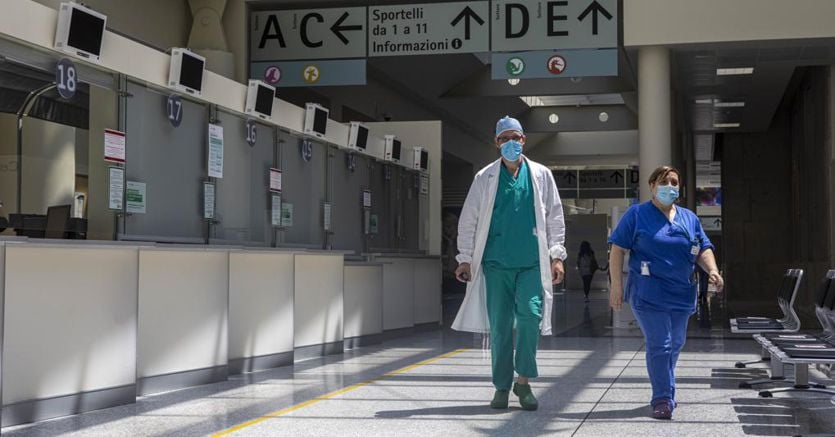Listen to the audio version of the article
Prime Minister Giorgia Meloni’s third question time was a concentration of attacks and sparks with her opponents. The most heated duel, however, was with the secretary of the Democratic Party Elly Schlein on healthcare who asked her how to reduce waiting lists by targeting the spending ceiling on the hiring of doctors and nurses with which the government is dealing and which has been causing staff shortages for years and was introduced in 2009 when Meloni – recalls Schlein – was a minister in the Berlusconi government. But what is this spending cap? And who introduced and confirmed it?
Serious staff shortages in the health service
Today the most conservative estimates say that 20 thousand doctors and at least 70 thousand nurses are needed, of which the shortage is most serious. The reason is simple and is linked to the “original sin” of the Healthcare system, i.e. the cap on hiring introduced in the spending review era: it is a ceiling that nails personnel spending to that of 2004, then removing the 1.4 percent. A brake that has inexorably dried up the ranks of staff and which in recent years has dramatically worsened in the face of the flight of many from hospital wards due to exhausting shifts and too low salaries: every year there are 2 thousand doctors farewells between dismissals and early retirements . Many choose to work in the private sector or abroad, as the OECD points out, according to which 15,109 nurses and 21,397 doctors have left Italy in three years. But what makes the situation even more worrying is the expected retirement of as many as 40 thousand doctors by 2025: in fact, in these years the so-called pension hump is expected, i.e. the peak of exits due to age limits.
When the spending cap was introduced and confirmed
During question time, Schlein recalled how the spending cap for NHS staff had been introduced by the 2010 finance law (law 191/2009). Paragraph 71 of the maneuver passed by the Berlusconi Government when the Minister of Economy was Giulio Tremonti and Meloni was Minister for Youth provided that the maximum level of expenditure on personnel must not exceed that of 2004 decreased by 1. 4 percent. But was it a new provision? In reality, no, because the spending ceiling for healthcare personnel was introduced for the first time by the budget for 2007 (law 27 December 2006, n. 296), i.e. the budget passed by the second Prodi government, when Tommaso Padoa Schioppa was Minister of Economy. In fact, in paragraph 565 of article 1, to reduce public spending it is established that «the bodies of the National Health Service contribute to the achievement of public finance objectives by adopting measures necessary to guarantee that personnel expenses, gross of the charges reflected on the administrations and IRAP, do not exceed for each of the years 2007, 2008 and 2009 the corresponding amount of the year 2004 decreased by 1.4 percent”.
The reconfirmation of the other Governments and the adjustments to the ceiling
The measure of the spending ceiling close to the deadline has always been renewed by subsequent governments. In 2012, the Government led by Mario Monti extended the rule on the spending ceiling for the years from 2013 to 2015, with the decree law 95/2012 and subsequently by the government of Matteo Renzi, with the budget for 2015 (law 190/ 2014), in paragraph 584, established that the same constraint of the spending ceiling on National Health Service personnel was extended until 2020, i.e. what was spent in 2004, reducing by 1.4 percent. In practice, the trap on the costs of healthcare personnel have been introduced and always confirmed by governments of all political colours: from the centre-left government of Romano Prodi to the centre-right government of Silvio Berlusconi up to the technical government of Mario Monti and the centre-left one with Matteo Renzi. In reality, the ceiling was then adjusted in 2019 by the yellow-green government led by Prime Minister Giuseppe Conte with decree 35/2019 which in article 11 provides that the Regions must not exceed the expenditure incurred in 2018 for personnel (with the possibility of increases linked to the growth of the Regional Health Fund) while still leaving the Regions the possibility of choosing between this new ceiling or the 2004 one if more advantageous.
